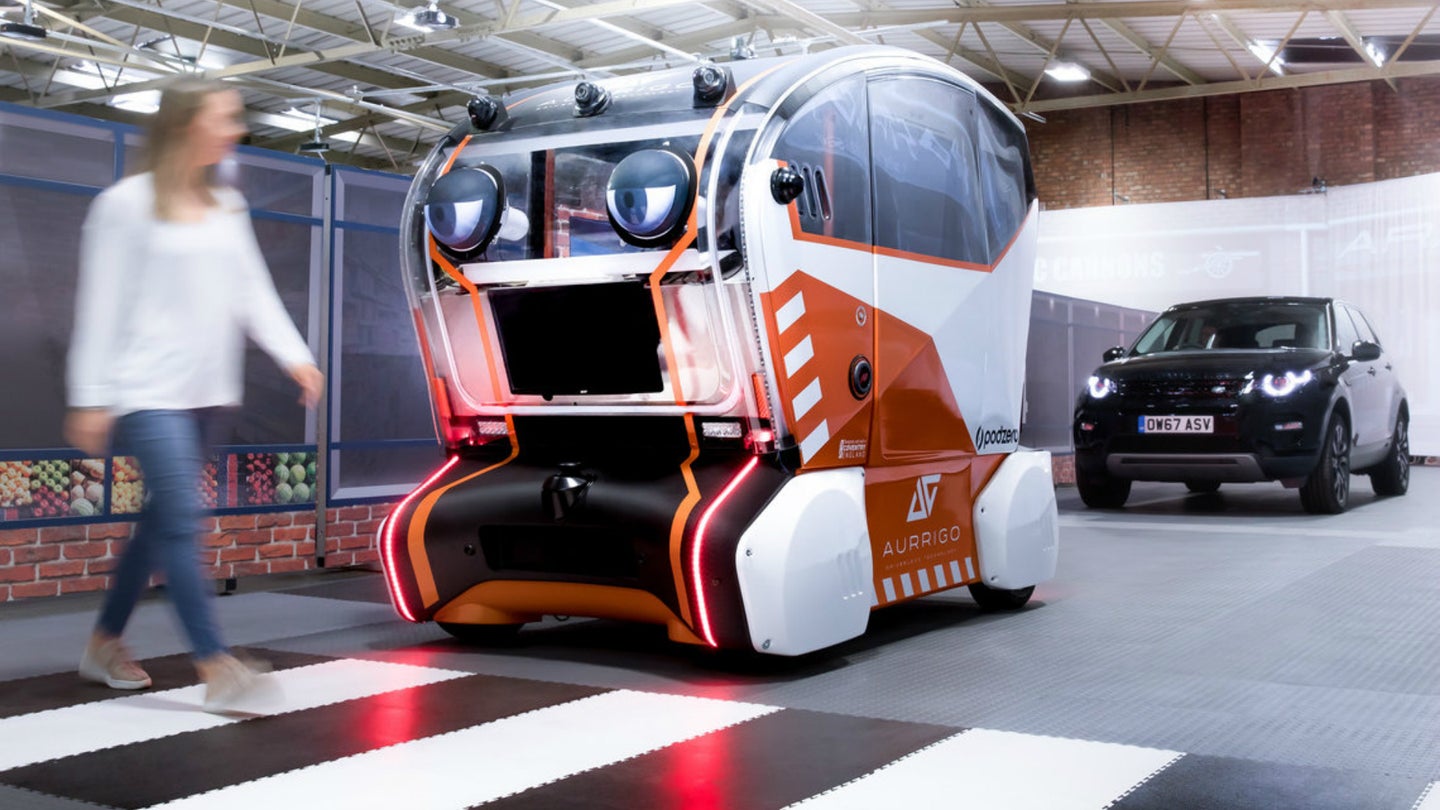Jaguar Land Rover Uses Digital Eyes to Test Public Trust in Self-Driving Car Tech
The eyes were created to give cars with autonomous technology the ability to communicate with pedestrians.

The development of autonomous driving tech systems has been a long and complex issue for the auto industry, and there's still quite a ways to go before the technology is ready for adoption by general consumers. A release from Jaguar Land Rover shows off a new piece of tech that it hopes may make the public transition to autonomous and semi-autonomous technology systems easier. Jaguar Land Rover's simple but creative solution was to create a pair of communicative digital eyes that can be mounted on the front of Aurrigo's prototype driverless pods.
The eyes were developed as a response to a recent study by AAA, which found that 73 percent of Americans surveyed would be afraid to ride in a vehicle with autonomous technology. Moreover, 63 percent responded that they would feel less safe as a pedestrian around them as well. This year, there was a fatal incident involving a pedestrian and a car with semi-autonomous tech in development by ride-hailing giant Uber. That event may have contributed to a general uneasiness that consumers feel about the possibility of self-driving car technology on public streets
After reading results from the AAA study, engineers at JLR posited that public mistrust in self-driving technology may come from a lack of communication between the vehicle and the people in its environment. Without a clear signal, a person crossing the street in front of an vehicle with autonomous technology would typically have no confirmation that the car's array of sensors have actually identified them correctly. These eyes are designed to "look" at humans in the pod's path as a way to assure pedestrians that the system can see them.
“It’s second-nature to glance at the driver of the approaching vehicle before stepping into the road. Understanding how this translates in tomorrow’s more automated world is important," explained Pete Bennett, future mobility research manager at Jaguar Land Rover in the press release. "We want to know if it is beneficial to provide humans with information about a vehicle’s intentions or whether simply letting a pedestrian know it has been recognised is enough to improve confidence.”
According to JLR the eyes have taken part in simulated driving tests with more than 500 human subjects. These studies are being run to give the automaker a better idea of just how humans and self-driving car tech may interact if we have to share the road.
